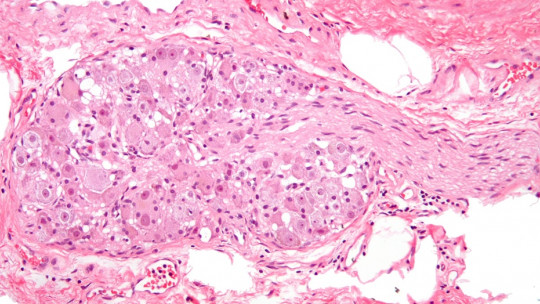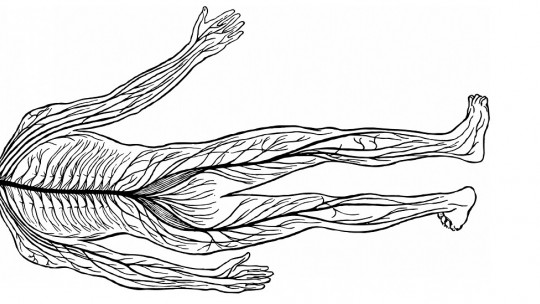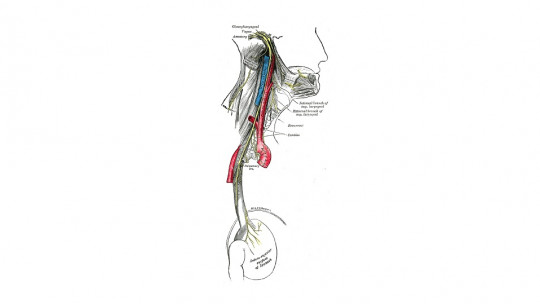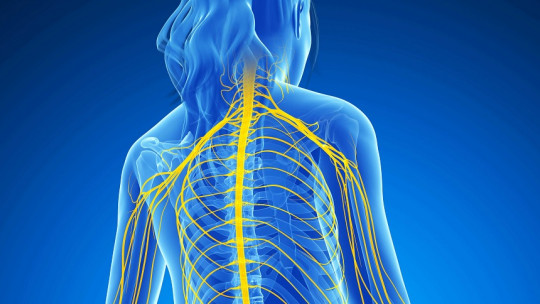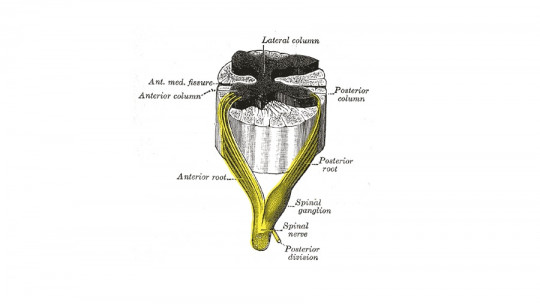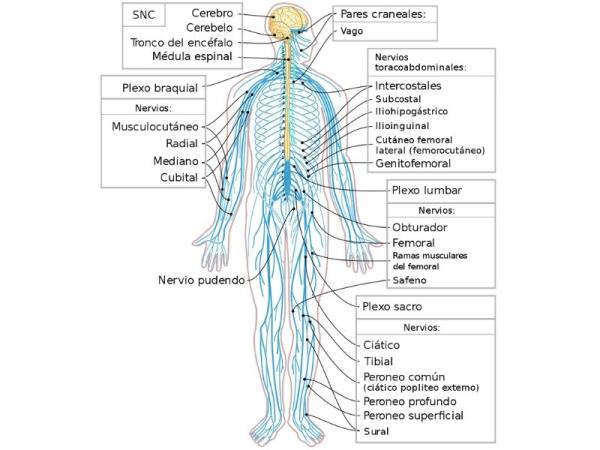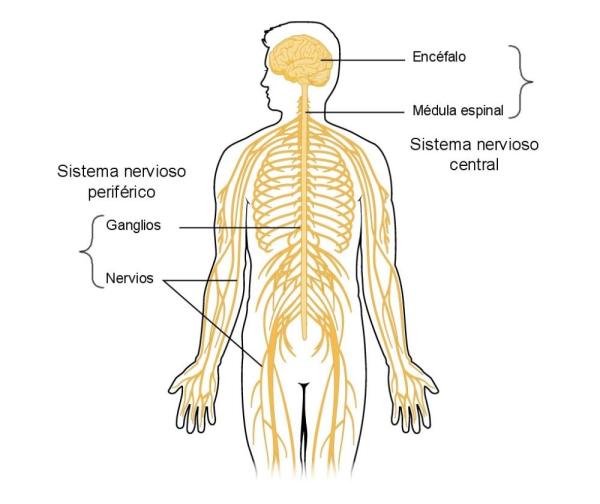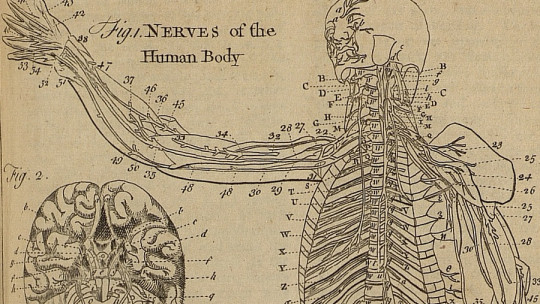
Our nervous system is responsible for coordinating the actions and activities that we carry out throughout our lives, whether voluntary or involuntary, conscious or unconscious. And it does so, mainly, thanks to the nerves, which are responsible for conducting the nervous impulses that make everything work well.
In this article we will see what nerves are, what role they play in our nervous system and what types of nerves exist among other issues.
What are nerves?
The nerves They are structures made up of bundles of neuronal fibers (nerve extensions and axons), located outside the central nervous system, which are responsible for conducting nerve impulses and communicating the nervous centers of the brain and spinal cord with the rest of the body’s organs, and vice versa.
These bundles of fibers are surrounded by a thin membrane, the perineurium, which surrounds the bundle of nerve fibers; and in turn, the complete nerve formed by the union of several fascicles is covered by another structure, called the epineurium.
As we will see later, some nerves have their origin in the spinal cord, while others are born in the brain. There are different types of nerves, which can be sensitive, motor or mixed, and this will depend on the function that each of them fulfills within our nervous system.
But before delving into it, we will briefly see how the human nervous system works and what its characteristics are.
The human nervous system
The human nervous system functions as a large system responsible for managing and coordinating bodily activities and functions. through its wiring network, which communicates all parts of our body
The nervous system is divided into the central nervous system (CNS) and the peripheral nervous system (PNS). The CNS is made up of the brain and spinal cord, the command control and transmission center for nerve impulses, respectively.
The PNS is made up of several types of nerves that leave or enter the CNS. The SNP is responsible for sending the information and, after being evaluated, the brain sends the appropriate responses to the necessary parts of the body, such as muscles or other types of organs.
The main function of the SNP is, therefore, connect the CNS to the organs, extremities and skin Its nerves extend from the CNS to the most external areas of our body. And it is the SNP that is responsible for helping us react to stimuli in our environment.
Types of nerves and classification
As we mentioned previously, the nerves of the peripheral nervous system connect the central nervous system with the rest of the body. And they do it in different ways, and with different functions. Next, we will classify these nerves according to the following criteria:
1. According to the direction in which the nervous impulse is transmitted
Nerves can be classified in 3 ways, depending on the direction in which they transmit the nerve impulse.
1.1. motor nerves
The motor nerves They are responsible for all voluntary skeletal and somatic movement (like moving a leg or arm), they conduct the nerve impulse to the muscles and glands.
1.2. sensory nerves
The sensory nerves are responsible for conducting the nervous impulse to the central nervous system, that is, from the receptors to the coordination centers.
1.3. Mixed nerves
The mixed nerves conduct the nerve impulse in both directions and They have both sensory and motor axons
2. Depending on the origin from which the nerves emerge
Nerves can also be classified based on where they originate from in our body. In this case, two types of nerves are differentiated:
2.1. Cranial nerves
There are 12 pairs of nerves (12 to the left and 12 to the right) that arise from the brain or at the level of the brainstem Some are sensitive, others motor and also mixed.
These nerves basically control the muscles of the head and neck, except for one of them, the vagus nerve, which also acts on structures of the thorax and abdomen.
2.2. spinal nerves
There are 31 to 33 pairs of nerves and they are all mixed type. They originate in the spinal cord and pass through the vertebral muscles to distribute throughout various areas of the body.
All of them have a dorsal or sensory root, made up of neuron bodies that receive information from the skin and organs; and another ventral or motor, which transmits information to the skin and organs.
3. According to their function in the coordination of voluntary or involuntary acts
Another of the criteria with which we can classify various types of nerves is their involvement in the coordination of voluntary or involuntary acts; that is to say, whether they innervate the autonomic nervous system or the somatic or voluntary nervous system
3.1. Nerves of the somatic nervous system
The somatic or voluntary nervous system is the one that totally or partially manages the actions and activities of our body, which can be conscious (such as picking up or manipulating an object) or unconscious (forwarding the left leg when walking, for example). Your nerves are made up entirely of myelinated fibers (insulating layer that forms around the nerve so that transmission is more efficient).
3.2. Nerves of the autonomic nervous system
The autonomic nervous system, for its part, responds primarily to nerve impulses in the spinal cord, brain stem, and hypothalamus. The nerves of this system are made up of efferent fibers that leave the central nervous system, except those that innervate skeletal muscle.
Afferent nerves, which transmit information from the periphery to the central nervous system, They are responsible for transmitting visceral sensation and regulating vasomotor and respiratory reflexes (monitoring heart rate or blood pressure).
In the autonomic nervous system, two types of nerves can be differentiated. On the one hand there are the nerves of the parasympathetic nervous system; this system predominates in moments of relaxation, and is made up of the cranial vagus nerve. It also shares the spinal nerves of the sacral region (lower part of the spine).
On the other hand, we have the nerves of the sympathetic nervous system. This system predominates in moments of tension, and its nerves share the rest of the spinal nerves. The nerve fibers that this system houses are partially separated from the rest of the spinal nerves and form two chains of ganglia, located on both sides of the spinal column.
Schwann cells: protective coverings
Spontaneous repair of peripheral nerves is possible thanks to a type of cell called Schwann, whose function is act as an insulating layer, wrapping nerve fibers with a substance called myelin This fatty layer protects the nerves and improves the speed of transmission of nerve impulses.
In the peripheral nervous system, Schwann cells play a fundamental role in carrying out a highly regulated process of differentiation and dedifferentiation, a unique characteristic of this type of cell and one that the rest of the cells in the nervous system lack. This advantage means that they have great plasticity and allows them to go from a state in which they produce myelin to another, less differentiated state, in which they contribute to the repair of the damaged nerve.
When we suffer an injury to a peripheral nerve, these cells temporarily lose their ability to form myelin and regress to an earlier, very dedifferentiated stage. This occurs to help the nerve regenerate so that it can reach the target tissues Once the nerve is repaired, the cell regains its ability to produce myelin.
Researchers have discovered that in this process, the chemical messenger called cyclic AMP plays an important role. This substance sends a protein to the nucleus of the Schwann cells that, once the nerve is repaired, starts myelination again. This occurs through the inactivation of a specific gene (the c-Jun gene).
Ultimately, this process is what makes possible the spontaneous repair of a nerve and even, in some cases, the reimplantation of amputated limbs or body members, such as a finger. In that case, Schwann cells would help recover the ability to move and touch itself. Although, unfortunately, in certain types of nerves, regeneration is not complete and lifelong consequences remain.

